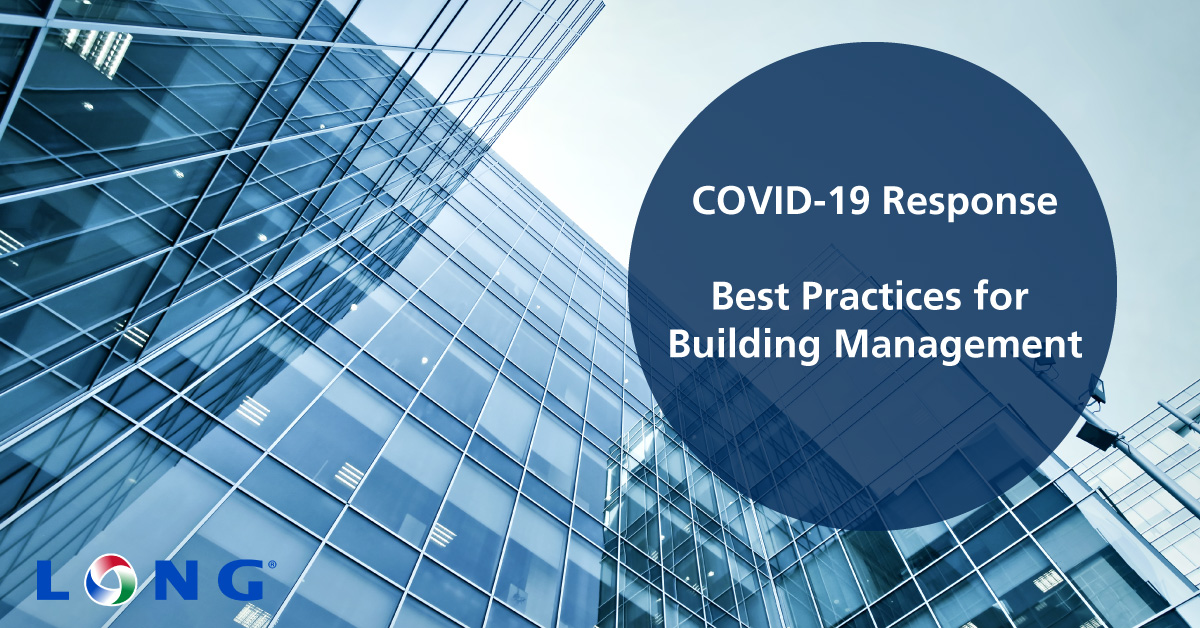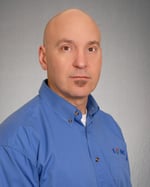Best Practices for Building Management

The spread of COVID-19 has generated unforeseen changes for all of us. For building owners and managers, one of the most significant changes they are experiencing is a reduction in occupants. With less people in the building on a regular basis, the operations for building automation systems and HVAC equipment should change as well to prevent unnecessary runtime and costs. To assist in this transition, we've compiled a list of best practices that you can implement for your building. These tips and recommendations can help you keep your building clean and operating efficiently during reduced occupation and minimize operational costs. Due to the nature of the COVID-19 virus, changes to HVAC systems by themselves cannot totally rid your building of the virus. However, they can improve the indoor environment and, along with other measures, can reduce the likelihood of transmission of this virus.
Maintenance Practices
- If you had any confirmed cases of COVID-19 by staff or contract personnel in your building, perform a full cleaning and disinfecting of all affected areas using CDC cleaning practices for the virus: https://www.cdc.gov/coronavirus/2019-ncov/community/disinfecting-building-facility.html
- After cleaning and changing filter media, run all zones on maximum outdoor air for 24-48 hours prior to repopulating the building.
- In regards to air filtration:
- Installing a MERV 13 or higher rated air or furnace filter in your business or home can be used for risk mitigation but is not a solution in and of itself. MERV 13 filters can capture some airborne viruses and bacteria from coughs and sneeze, though there is no guarantee or scientific evidence that a strong air filter will protect you from the coronavirus. You can read more about it here: https://www.nafahq.org/covid-19-corona-virus-and-air-filtration-frequently-asked-questions-faqs/#Can
- Seal the areas around and between air filters to avoid blow by of particles.
- The personnel changing filters should use proper PPE during this operation.
- All filters should be properly disposed of in closed plastic bags/boxes.
- Consider adding ultraviolet germicidal irradiation (UVGI) in air handling units that serve high-risk areas such as shelters, waiting rooms, or prisons.
- Consider adding portable in-room air cleaners with HEPA filtration and/or HVAC UV light, making sure to seal off the UVGI light from the eyesight of those in the room.
- Maintain regular cleaning and disinfecting practices for occupied areas including any utilized adjacent areas and routes of ingress and egress by employees.
- Don’t forget to fill plumbing P-Traps weekly, or more often if necessary, in all areas of the building to avoid them drying out and allowing waste gases to escape into the building.
- Increase disinfection of frequently touched surfaces.
- Install more hand sanitation dispensers, assuming they can be procured.
- Supervise or shut down food preparation and warming areas, including the office pantry and coffee station.
- Close or post warning signs at water fountains in favor of bottle filling stations and sinks, or even better, encourage employees to bring their water from home.
Improving Ventilation
- It is recommended to run ventilation systems at least two hours early before daily occupancy and two hours after occupied times to improve indoor air quality with fresh outdoor air. Conversely, the system could be run an additional 4 hours during unoccupied hours or up to 24x7, taking care not to exceed minimum or maximum unoccupied air temperature setpoints.
- It is recommended that air recirculation not be used in occupied areas. Therefore, return air dampers should be fully closed and outdoor air dampers opened as far as possible. Care must be taken to not negatively effect static pressure between adjacent spaces.
- It is recommended to turn off rotary heat/energy recovery devices so any possible virus particles exhausting the building are not carried into the incoming airstream. Before these recovery units re-enter service, they should be disinfected and the filter media changed.
- ASHRAE recommends disabling demand control ventilation (DCV).
- If DCV with CO2 controls cannot be disabled, ensure CO2 sensors are calibrated and that the maximum CO2 level is < 500 ppm, effectively disabling the DCV and increasing airflow to spaces.
- Otherwise, setup controls to ensure the designed outside air proportion to all occupied spaces.
- Pay special attention to freeze control in winter, as extra outside air could cause freeze issues.
- Ensure space pressurization is still managed to specification. Increasing outside air requires more exhaust so make sure building pressure reset is working.
- Fan coils or other units that recirculate air in spaces should be turned off if possible.
- If these recirculating units must remain on and there is filtration, it is recommended to change filtration as per above recommendations for air handling units.
- For storage rooms, storage closets, janitorial closets, or any other rooms without their own ventilation and that are visited at any time, leave doors open during unoccupied hours to ensure no virus hotspots develop.
- If Janitor Closets have operational exhaust fans, keep these doors closed when not in use and ensure negative pressurization is maintained, these fans should remain on 24x7 in ALL areas of the building.
- Exhaust fans in ALL restrooms should remain on 24 x 7, whether these are in currently occupied or unoccupied zones.
- Restroom ventilation should ensure negative pressure compared to surrounding space.
- Don’t forget to fill plumbing P-Traps weekly, or more often if necessary, in all areas of the building to avoid them drying out and allowing waste gases to escape into the building.
- Do not open windows in bathrooms as it may cause positive pressure, spreading odors and contaminants to other areas.
- Best practice is to flush toilets with lids down (if available) to avoid creating plumes of water droplets.
- Call LONG if you require any assistance implementing any of these approaches.
Shutting Down Unused Areas When Staffing is Reduced to Minimize Operational Costs
- Based on total number of employees still coming to the job site, and accounting for the CDC recommended minimum 6 ft. safe distance, determine how many ventilation zones would be required to be utilized.
- Do not exceed zone occupancy per design drawings.
- Pay close attention to areas where occupied and unoccupied zones may overlap, do not use these areas.
- Identify the zones that make the most sense based on a few different factors.
- Type of work
- Office spaces with good ventilation, both outside air and exhaust, should be priority
- Access to needed workstations or other equipment
- Emergency Egress
- Restrooms within or near zone
- Preference of zones with 100% outside air capability, or those with higher outside air proportion
- Proportional zone exhaust air flow is available for pressure control and required air changes
- Limit access to unoccupied zones.
- If utilized space is minimized, once zones are chosen and personnel moved into those zones, ensure the ventilation system is set to 100% or maximum outside air.
- Call LONG if you require any assistance implementing any of these approaches.
Suggested Unoccupied Building Considerations for Conservation.jpg?width=347&name=Office_Interior_%20(12).jpg)
- Optimal Start / Stop (OSS):
- Change night setback setpoint for heating to lower temps during this mode by 2°F to 4°F.
- Change OSS target setpoint for occupied likely 72°F to roughly 68°F “comfort cooling setpoint.”
- Check night setback cooling setpoint normally set to default at 110°F to make sure it is high and does not drive the refrigeration system on.
- Change or modify schedule going into OSS so purge will happen during unoccupied schedule.
- Adjust purge mode setpoints.
- Verify associated equipment driven by the OSS, possibly shut down units that would not be necessary to accomplish the purge/flush.
- Unit Operation:
- Reset duct static setpoints and evaluate for proper operation, i.e. tuning required.
- Raise cooling enable setpoints disabling mechanical cooling, the goal being to perform a flush and not condition the space.
- Raise discharge temp setpoints.
- If room temp determines setpoints, raise those reset values to widen the gap.
- Possibility of limiting demand.
- Terminal Boxes - VAVs & FPBs:
- Adjust cooling and heating setpoints using global command writable for occupancy and unoccupied.
- Adjust configuration of fan powered boxes to act as cooling only boxes in application mode, multistate value. This may tell boxes they are cooling only and can save a lot of money. This is an easily toggled value on systems in pocket floors or the whole building which can then be toggled back to run as what it should be. This could be done via a schedule and can be adjusted as desired.
- Leave flow setpoints alone – this will have long-term impacts and costs associated.
- Chilled Water Systems:
- Raise setpoints or adjust the reset upper and lower setpoints to not work the equipment as hard.
- Raise lag enable setpoint to keep lag(s) off longer.
- If free cooling like condenser water plate exchanger, increase setpoint to force longer free cooling cycles.
- Hot Water Systems:
- Lower supply setpoints or adjust the reset upper and lower setpoints to run equipment less.
- Lower lag enable setpoint to keep lag(s) off longer.
- Adjust system enable setpoints to keep off longer before running under above conditions.
- Miscellaneous Equipment:
- Possibly turn off cabinet unit heaters in entry ways or stairwells not protecting fire risers.
- Add staged occupancy to fan coil and fan powered boxes to limit demand, i.e. time delayed occupancy, turn on 5 to 10 boxes at a time with delay in-between. Also apply this to the units that serve them to start one AHU then the next a minute later or so. Great tool for energy “Ratcheting Energy Billing.”
Of course, with any changes along these lines, all setpoints need to be recorded and properly document prior to making changes!
If you have any questions regarding implementation of these recommendations, please contact LONG today.
*LONG shall not be liable for any direct or indirect, incidental, consequential, or punitive damages resulting from the suggested recommendations.
Topics
Subscribe to Updates

Scott is responsible for leading all sales efforts for the controls business unit at LONG headquarters. He has a bachelor’s degree in Mechanical Engineering from the University of Colorado and served in the United States Navy as an Engineering Watch Supervisor before moving on to management positions at Bailco Service Corporation, Johnson Controls, Tiernam & Patrylo and Trane. He has been with LONG since 2009 and is LEED AP-NC, FE and Six Sigma Black Belt certified. In his free time, Scott enjoys CrossFit, spending time with his family and outdoor activities including hiking, camping, hunting and golfing.
